The fit of the cartridge to the bolt matters as much as its fit in the chamber
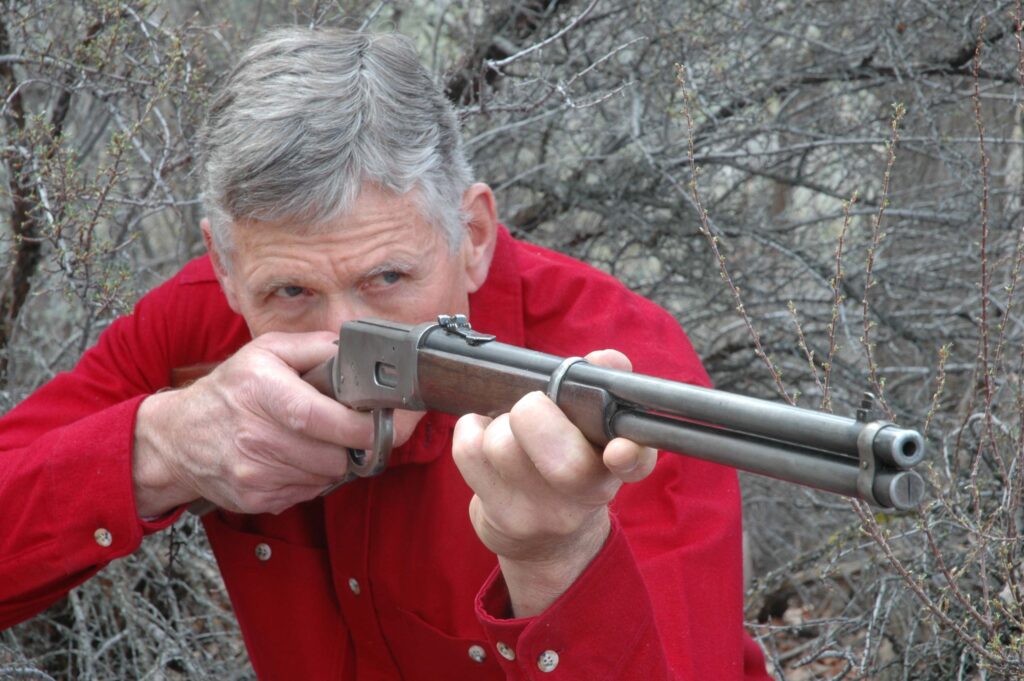
Pulling a trigger sets off a rapid-fire chain of events. The rifle’s firing pin flies ahead to crush the shock-sensitive priming against the anvil inside the cartridge’s primer cup. Detonated, the priming shoots flame through the flash-hole in the primer pocket, igniting gunpowder in the cartridge case. The burning powder produces gas that quickly expands, pressing the ductile brass case to the chamber wall as it kicks the bullet from the case and out the barrel. At the same time, it pushes the case head against the bolt face.
Gas pressure can exceed 30 tons per square inch. But the case wall tapers (thick at the base to thin at the mouth) so doesn’t respond uniformly across its length. Pressure that irons case neck and shoulder to the chamber has progressively less effect toward the thick base, which remains near its original diameter.
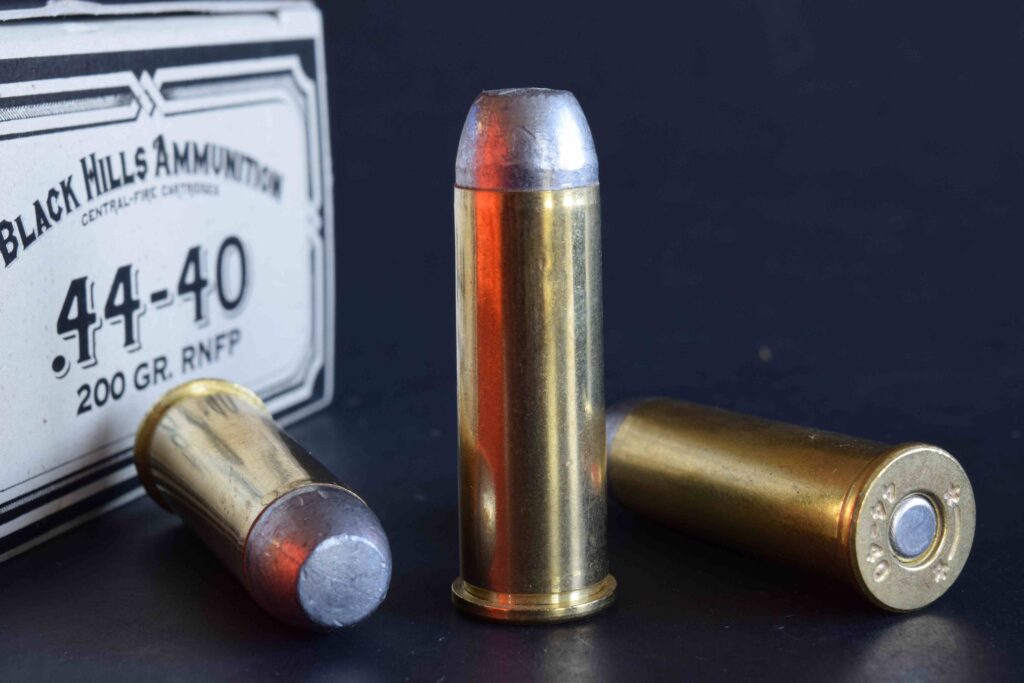
Winchester’s first centerfire cartridge, for its 1873 rifle. was the rimmed .44-40, later also chambered by Colt in its Single Action Army revolver. It’s still popular in “Old West” reproductions.
If the case is held tight to the bolt face, everything is OK. But it’s impractical to have an unfired cartridge tight against the bolt face. The cartridge would be very hard to chamber – essentially a press fit.
Chambers must allow for slight variations in case length, as the bolt must lock every cartridge into battery easily. To ensure slightly oversize cases will chamber, there’s headspace.
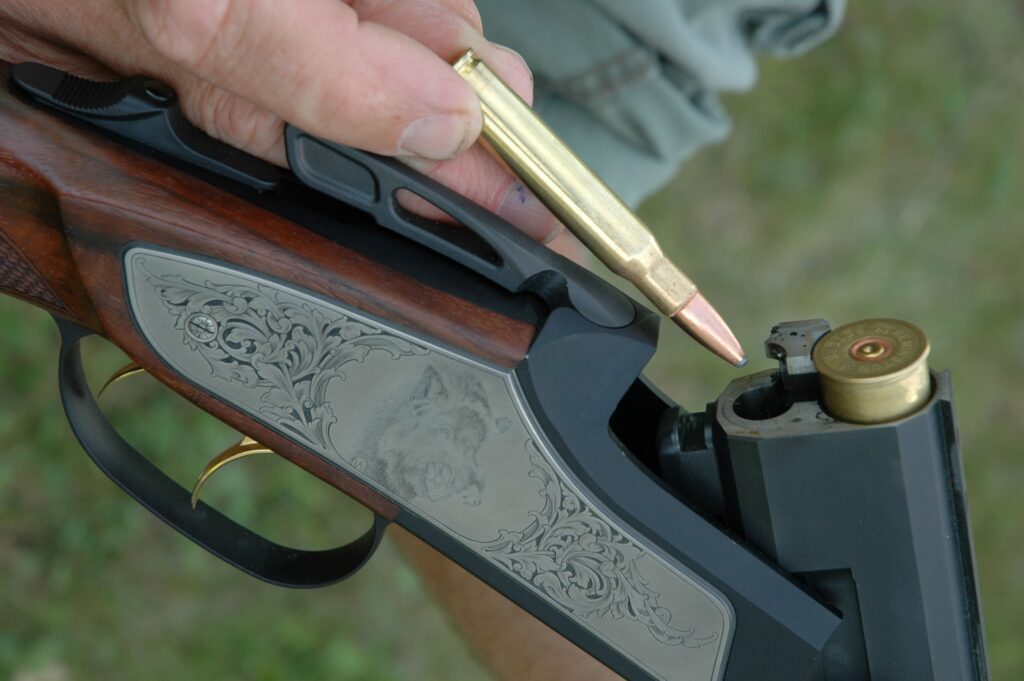
This hinged-breech combination gun fires standard rimmed 12-bore shotshells in the top barrel. In the bottom barrel the .30-06 headspaces on its shoulder; the extractor is designed for its rimless case.
Headspace is neither the size of a rifle’s chamber, nor the disparity in case and chamber volumes. Headspace is the distance from the face of the locked bolt to a datum line in the chamber that arrests the forward movement of the cartridge. It is the most critical measure defining the relationship between the cartridge and its seat in the rifle.
If that measure is too short for a slightly over-long case, that cartridge won’t chamber. And you’ll have to stop that buffalo thundering toward you by cracking it on the noggin with your rifle barrel.
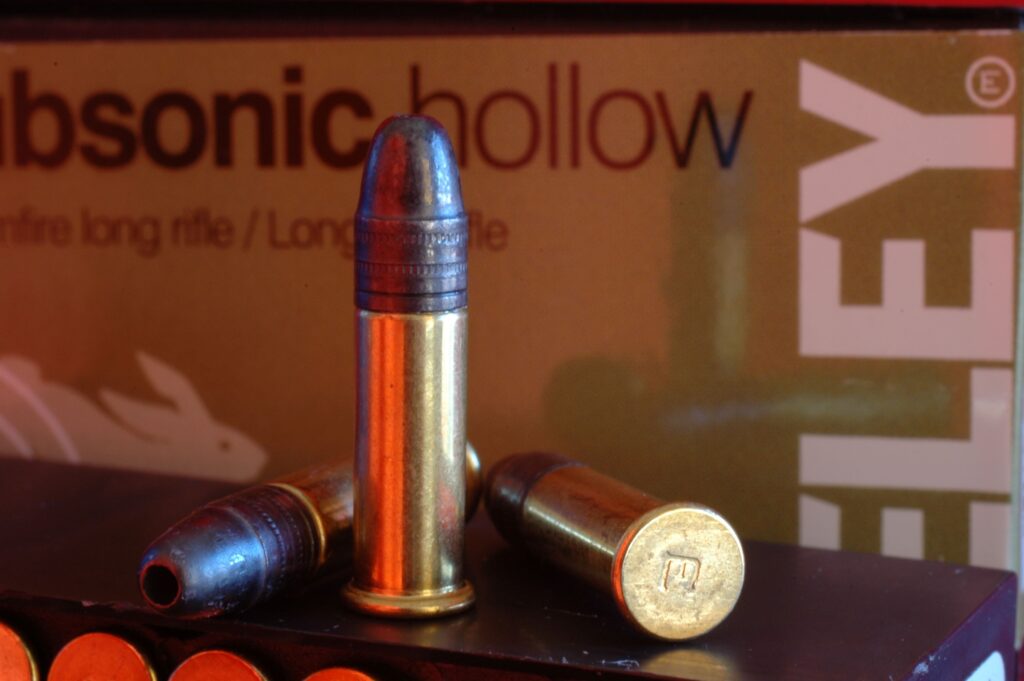
Dating to 1887, the .22 Long Rifle evolved from Smith & Wesson’s rimfire case of the 1850s. The rim not only serves to headspace the cartridge; it holds the priming mixture, “blown in” during manufacture.
If the measure is so great as to cause a condition of excess headspace, you have another problem. The bullet will fly; but if the case comes apart, you’ll have no second shot – at best.
The firing pin’s blow shoves the cartridge ahead until it contacts the datum point in the chamber. Case expansion sticks it there. The case head isn’t stuck; it is thick and expands very little. It does move rearward to meet the bolt face, stretching the case just forward of its head. Excess headspace extends that stretch. Repeatedly re-sized in a handloading die and fired in a generous chamber, a case becomes “work-hardened” and will crack, even separate. Think of a soda-can tab as you bend it back and forth. A failed case spills gas into the chamber. Before you can blink, that gas zips along the bolt race, into the magazine well, anywhere it’s not blocked by metal that can withstand its thrust.
A rifle with too much headspace can cause case separation upon the first firing.
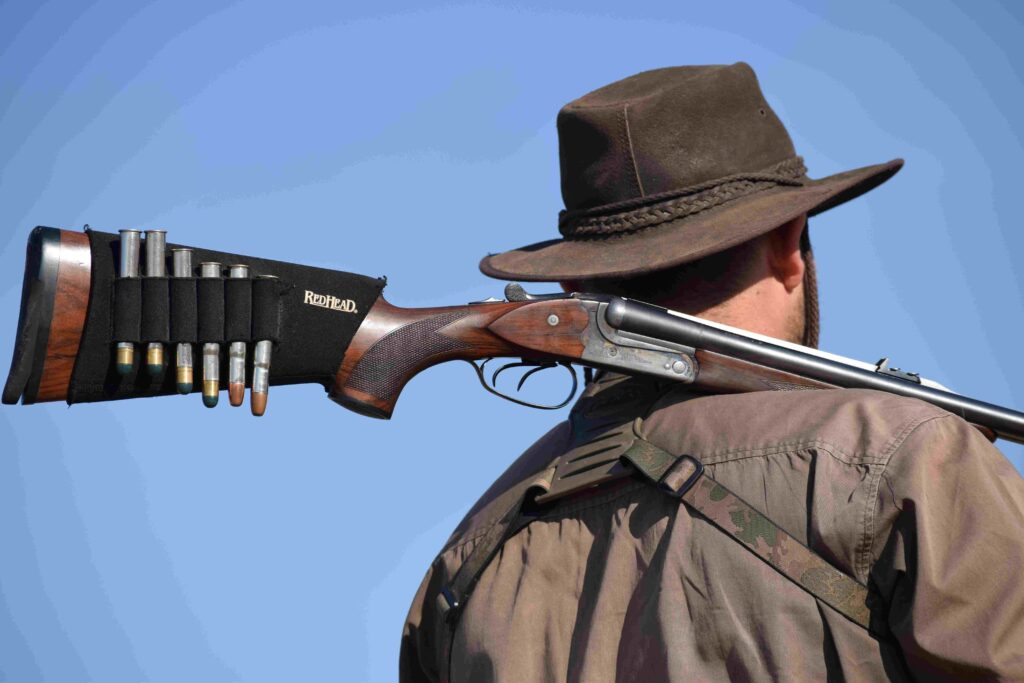
Dangerous-game cartridges designed for double rifles are rimmed, like the .470s here – whose rims also help keep them from slipping from cartridge loops!
The term “headspace” originated when most metallic cartridges had rims, so early measurements were made at the head. In truth, the head comprises several parts of a centerfire case: its stamped face, its rim, its extractor groove (if any) and its thick base. Around the primer pocket and flash-hole, the base’s periphery tapers forward in a web that becomes the thinner case wall.
Headspace is still gauged from the bolt face, but the forward or datum point varies with cartridge design. A rimmed case like that of the .30-30 or .45-70 is arrested by the front of the rim. The datum line for rimless bottleneck cartridges like the .30-06 and .270 lies on the shoulder. Ditto for rebated cases (the .284 Winchester), in which the rim is smaller in diameter than the base. A straight rimless case like those used in autoloading pistols (think .45 ACP) headspaces at the mouth, because that’s what stops the round from going farther forward. Semi-rimmed cartridges might headspace on the rim, but sometimes, as with the .38 Super Automatic, the rim is insufficient, given action tolerances required for sure function. In that instance, the case mouth becomes a secondary stop. The semi-rimmed .220 Swift, on the 6mm Lee Navy case, has a more substantial lip; but most handloaders prefer to neck-size only, so after a first firing, the case headspaces on the shoulder. More on that later.
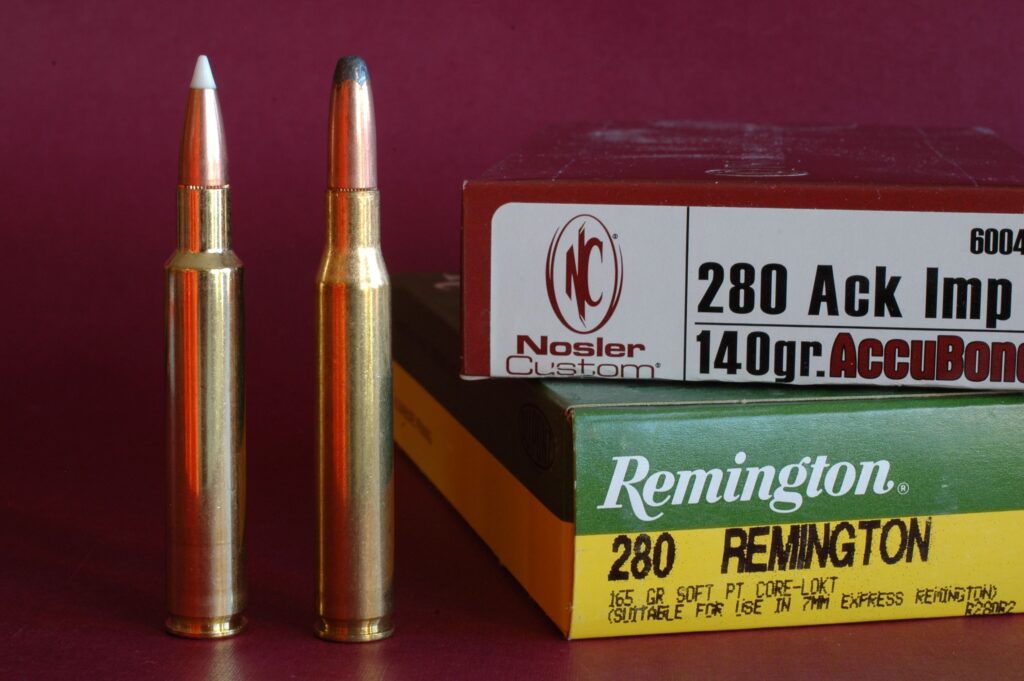
The .280 Ackley (left) is a “blown out” .280 Remington. The datum line is the same distance from the head, so both can be fired safely in a .280 Ackley chamber. A .280 Rem. case then emerges as an Ackley.
Belted cases provide another measure of headspace. On a belted magnum, the stop is the leading edge of the belt – typically .220 to .224 from the bolt face. Belted magnums were headline news stateside during the 1950s and ‘60s, with Winchester’s .458 (1956) whelping the .338 (1958) and .264 (1959), then Remington using the same case for its 7mm Magnum in 1962, a year before Winchester came up with its long-awaited .300. Meanwhile, Norma announced its .308 and .358. All were called “short” magnums, as their cases were 2.50 to 2.63 inches long and fit .30-06-length rifle actions. Like Weatherby’s .257, .270 and 7mm magnums of the ‘40s, they derived from the.300 and .375 Holland & Holland Magnums, fielded before the Great War. With less case taper and sharper shoulders than their 2.85-inch forebears, the short magnums held about as much powder. Hunters got “long magnum” punch from more affordable rifles.
But the .375 H&H of 1912 was not the first belted cartridge. The .400/375 Belted Nitro Express had preceded it in 1905. The belt established headspace on cartridges lacking definite shoulders, without impeding stacking or feeding in magazines.
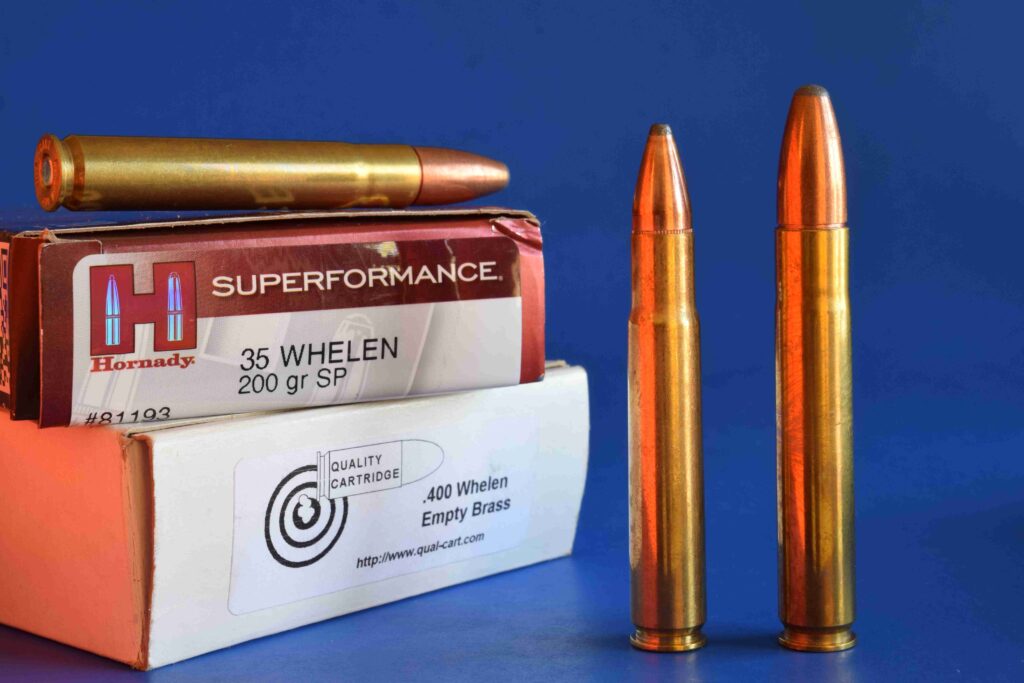
A necked-up .30-06, the rimless .35 Whelen (left), still has plenty of shoulder for proper headspacing. There’s enough on the wildcat .400, though none to spare!
Gunsmiths measure headspace with steel “go” and “no go” gauges, inserted in the chamber. The “go” gauge is typically .004 to .006 shorter than the “no go” gauge for rimless and belted cartridges. The bolt should close on a “go” gauge, not on a “no go” gauge. In a perfect world, if the bolt closes on a “no go” gauge, the barrel should be set back and re-chambered to achieve proper headspace. However, many chambers that grudgingly accept “no go” gauges are still safe to shoot.
Minimum and maximum headspace measurements are not the same as minimum and maximum case dimensions. A .30-06 chamber should measure between 1.940 and 1.946, bolt face to shoulder datum line. But a .30-06 case should register 1.934 to 1.940, base to datum line. Case alterations can change the cartridge-chamber relationship. Reducing the head-to-datum line measure of a case can cause a condition of excess headspace even if the firearm checks out perfectly!
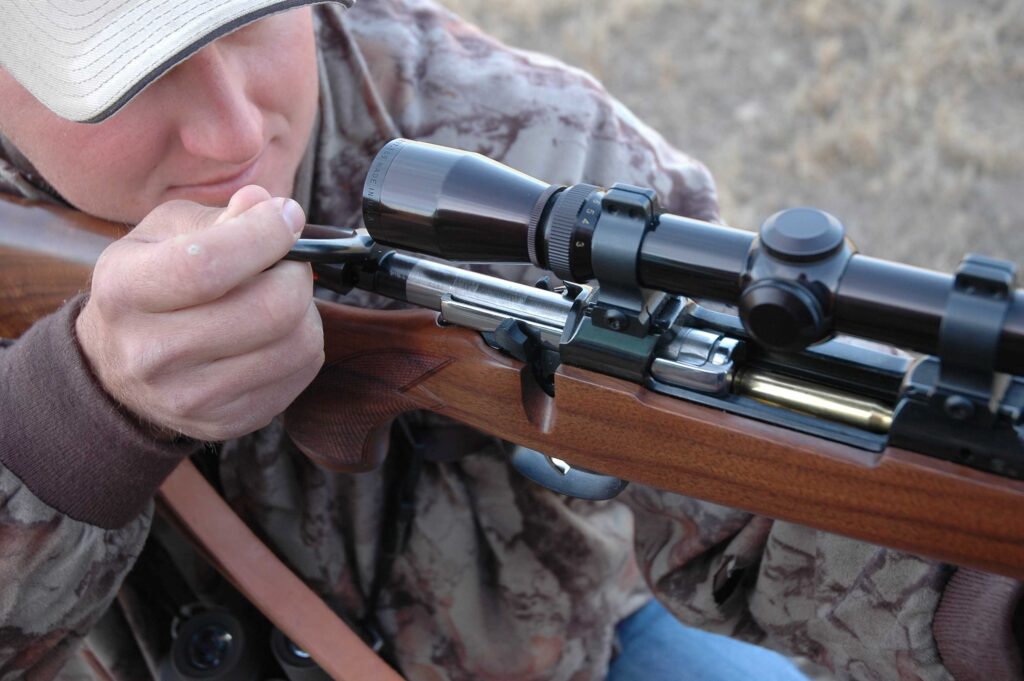
Rimless cartridges like the .30-06 stack easily and feed hitch-free from magazines. A Mauser extractor on this CZ rifle catches the groove on each case as it rises, and controls it forward.
Years ago, preparing to handload for the wildcat .240 Hawk, I set the die to full-length resize, so first-time cartridges would easily fit the chamber. The die had been made to reduce the neck diameter of the parent (.30-06) case without changing the datum line. Alas, my first shot blew gas from every port of the Remington 700 action! The case showed a circumferential crack ahead of the belt. I compared sized cases with the fired hull. The sized .240s were shorter by .1 inch! The die interior was too short for this rifle’s chamber. On that first shot, the front of the case expanded into the chamber to grip it, and the rear of the case backed up .1 inch against the bolt, pulling the brass apart just ahead of the web.
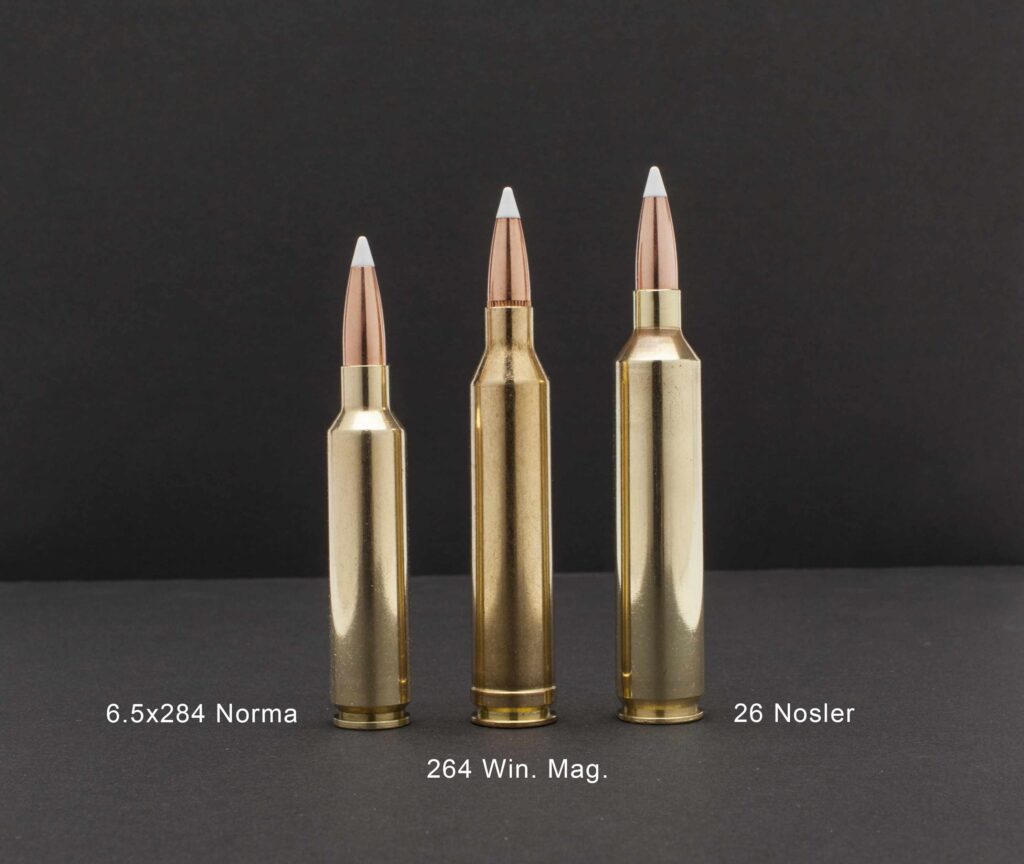
L-R: rebated (rim slightly smaller than the head), belted and rimless 6.5s. The .264 headspaces on the belt (unless you extend case life by neck-sizing). The other two headspace on the shoulder.
Many chambers for belted cartridges are generous in the shoulder area, so full-length-sizing even in proper dies can shorten the head-to-shoulder measure considerably. Soon you’ll see a white ring around just ahead of the belt, where the case has stretched repeatedly. Insert a straightened paper clip with an “L” bend at the end, and you may feel a thinning of the case wall there. Discard that case before it separates!
Handloaders prolong case life by neck-sizing only, so the brass moves little upon firing. There’s no need to further reduce its dimensions unless the cartridge might be used in another rifle with a tighter chamber. Autoloading and lever- and slide-action rifles have less camming power than bolt-actions; so for these, full-length sizing (or small-base dies that squeeze cases down further) makes sense – especially if you’re handloading for a hunt!
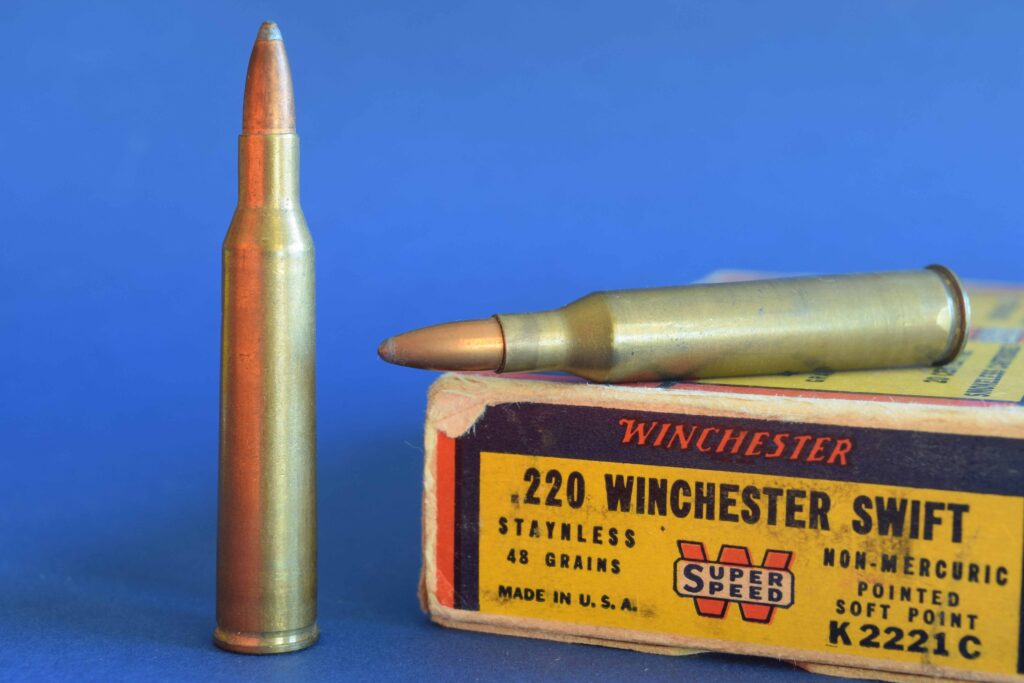
Notable among few semi-rimmed rifle cartridges is the .220 Swift, derived from the 6mm Lee Navy in 1935. Fastest sporting cartridge of its era, it sent 48-grain bullets at 4,110 fps, headspaces on the shoulder.
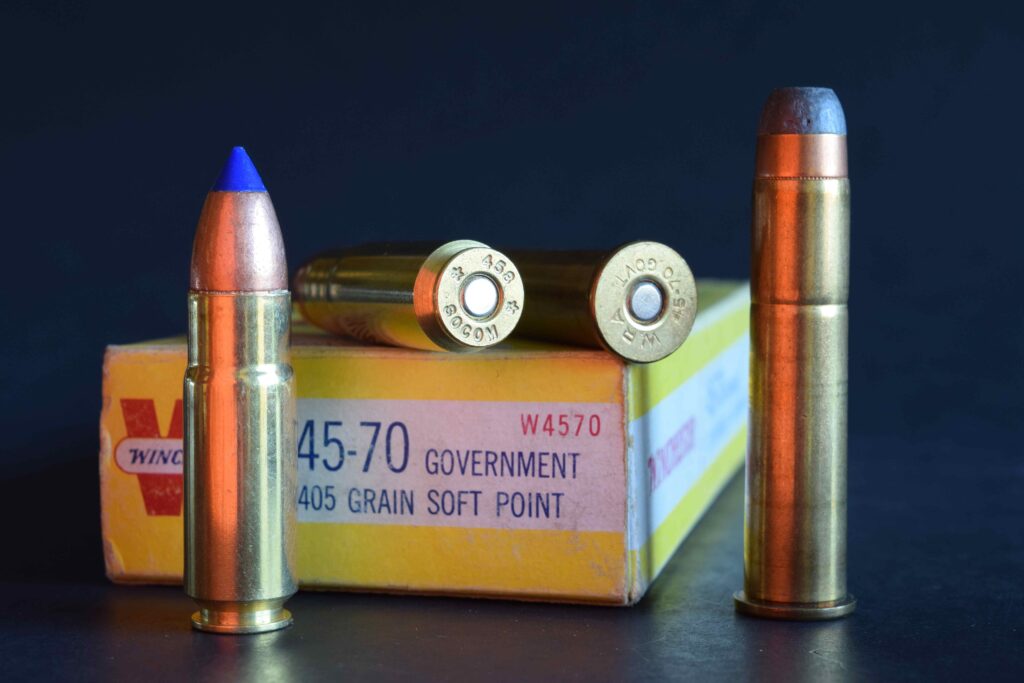
The .45-70 (right) dates to 1873 and the single-shot “trap-door” Springfield. A short case and rebated head help the modern .458 SOCOM pack lots of punch in autoloaders with short actions, small bolt faces.
Headspace can change, as locking lugs and seats compress with each firing. Repeated use of stiff loads can drain elasticity from steel and increase headspace. The linkages of early lever rifles designed for black-powder pressures can develop excessive headspace with frothy smokeless loads.
For more information on handloading and headspace – and tools and components that will spare you problems with either, consult the experts at Midsouth Shooters Supply!
Sidebar: Rims and Rimfires
Rimfire cartridges in the U.S. date to Smith and Wesson’s .22 of the 1850s, then the .44 Henry of 1860. Their head is simple, with no web or flash-hole. The rim is simply folded into the case. But there’s a small space in that fold. Priming mix is “spun” or “blown” into that gap to be ignited by the firing pin’s blow crushing it against the front of the rim and the chamber edge. Limited to low-pressure ammunition, the rimfire case is no longer paired with big bullets. But it’s still used for the world’s top-selling sporting cartridge: the .22 Long Rifle, introduced in 1987.
Most other .22 rimfires of the late 1800s had less oomph than the LR. The .22 Short and .22 Long endure, feebly – so too, for special applications, the .22 BB (Bulleted Breech) Cap and .22 CB (Conical Ball) Cap. The .22 WRF (Winchester Rimfire) of 1890 hangs on because popular rifles were once bored for it. The .22 Automatics from Winchester (1903) and Remington (1914) live no more. New bullets have revived the .22 WMR (Winchester Magnum Rimfire) of 1959; alas, Remington’s 5mm Rimfire Magnum expired not long after its 1970 debut. The popular .22 Stinger of 1977 is known as the Extra Long Rifle in Europe, as its case is slightly longer than the LR’s; but it’s loaded to the same length and designed for .22 LR chambers. Hornady’s brilliant .17 HMR, on the .22 WMR case (2002), and .17 Mach 2 on the .22 LR (2004) have been followed by the .17 Winchester Super Magnum (2013). It’s a bigger cartridge and runs at higher pressures, pushing 20-grain bullets at a listed 3,000 fps.








